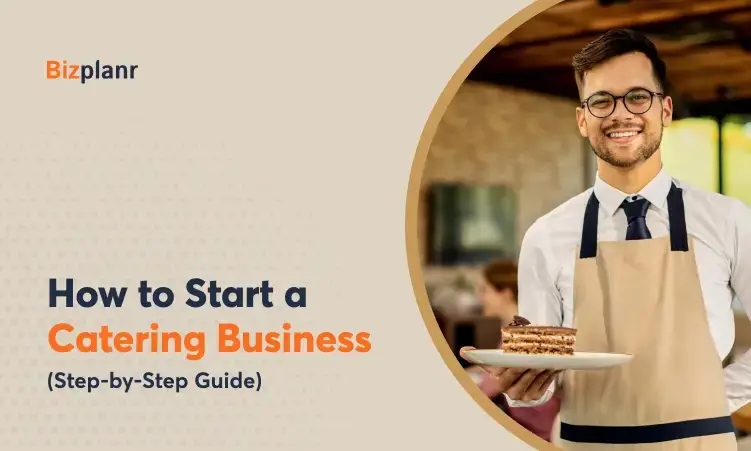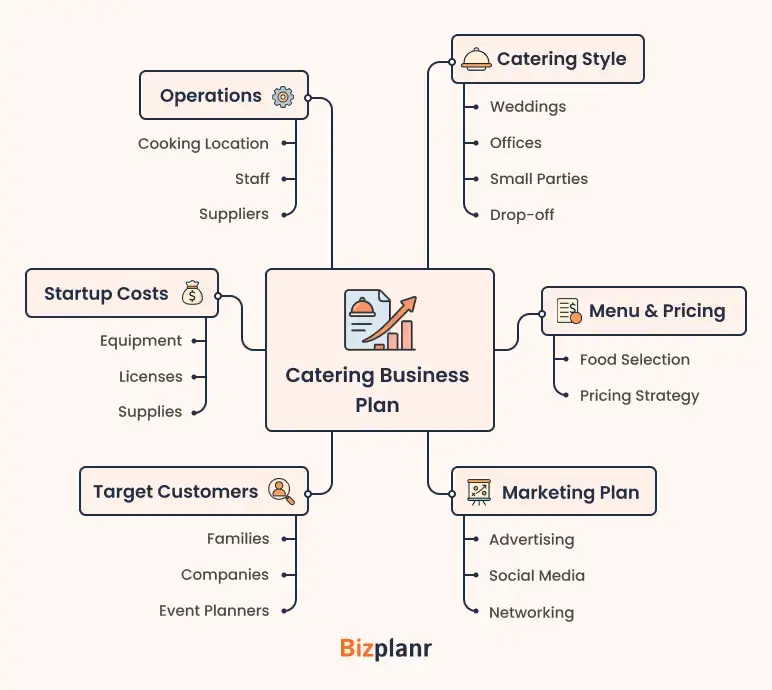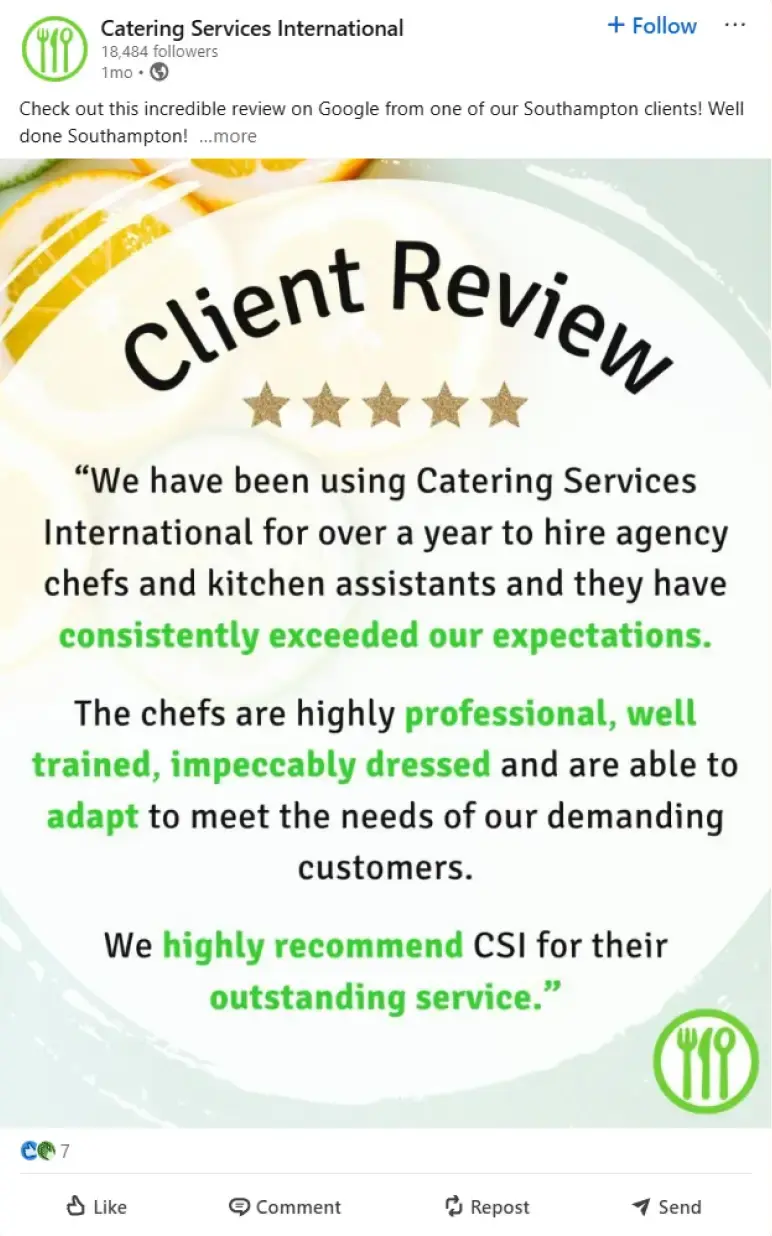I've worked with several catering businesses over the years. Here's what I saw. Almost everyone who starts catering can cook really well. The passion is there. The skills are there. The food tastes great.
But passion and cooking skills alone won't keep your business going.
The catering world is full of talented people who love food. What makes some succeed and others fail? The business part.
You need to price your food so you make money, but customers still buy. You need to reduce waste so ingredients don't eat your profits. You need to tell people about yourself so they find you.
That's what this guide covers. Not just cooking, but running a catering business that works.
I'll walk you through picking your style, planning costs, setting up your kitchen, building your menu, and finding customers. More importantly, I'll share what actually works.
Let's build something real.
Key Takeaways
- Catering startup costs range from $10,000 to $50,000 or more.
- Start with a small menu and small events. Grow step by step.
- Clean food and polite service keep customers happy.
- Flyers, social media, and word of mouth bring more orders.
Step 1: Choose your catering style
When I first help someone start a catering business, the first thing I ask is, “How do you want to serve your food?”
I’ve learned that this choice shapes almost everything—your menu, your prices, the tools you need, and how much you can handle at events. It also makes it easy for your customers to understand what you do.
From my experience, here are the ways you can serve food:
| Style | How It Works | Good For |
|---|---|---|
| Full-Service | You handle everything. | Big weddings, corporate events, parties |
| Buffet | You cook, and guests serve themselves. | Medium-sized events |
| Drop-Off | You cook and deliver (no staff, no setup.) | Office lunches, small gatherings |
| Specialty | Focus on one type of food: vegan, BBQ, or desserts. | People wanting special food |
| Food Truck | Serve food from a mobile kitchen at different places. | Fairs, festivals, outdoor events |
When I help someone decide, I tell them to think about 3 things:
- Money – How much can you spend on helpers, equipment, and ingredients without stress?
- Customers – Who do you want to cook for? Families, offices, weddings, or outdoor crowds?
- Your style – Do you like making simple, great dishes, or do you enjoy handling big events with lots of moving parts?
If you're starting on a limited budget, I recommend drop-off catering. It's simple, you can manage it alone, and you can focus on making great food while learning the business. Later, you can grow into bigger styles when you're ready.
Step 2: Research your market
When I talk to people starting a catering business, here's the first thing I tell them: figure out what people around you actually want before you cook anything. What works in one city might flop in another. Every area is different.
Start by watching events near you:
- Are there many weddings?
- Do offices order lunch often?
- Are birthday parties and family events common?
This will help you see what type of catering people need most.
Next, check other catering businesses nearby. What food do they sell? What are their prices? Do they offer anything extra? This helps you know what works and how you can be different.
Talk to people. Ask friends, family, or event planners what they like in a caterer. You can even post a simple question on social media. Their answers give good ideas for your menu and service.
Remember budgets. Offices may spend more per person, while families usually want something simple and affordable.
Good market research will guide you in the right direction. It will help you create the right menu, set fair prices, and offer services that people really want.
Step 3: Write a simple catering business plan
A catering business plan shows you the way. It doesn’t need to be long or fancy. One or two pages are enough. The goal is to know how your business will run and how you’ll make money.
Here’s what I suggest you include in your plan:
Writing this down helps you see the real numbers. You'll know exactly what you need to charge to cover costs and make a profit. You'll spot problems before they happen.
Get Your Business Plan Ready In Minutes
Answer a few questions, and AI will generate a detailed business plan.
Step 4: Budget your startup costs
Before you start cooking for clients, picture this: your first big order comes, but you don’t have enough money for food, helpers, or packaging. Scary, right? That’s why planning your startup costs is so important.
I ask new caterers: “How much money can you spend to start without getting into trouble?” Knowing this helps you avoid stress and overspending. Many small businesses fail because they don’t plan their budget.
Making a budget is simple. Just write down the main things you need to spend on to run your catering business. When you know your costs, it’s easier to plan and set your prices.
Here’s what you might need to spend on:
| Expense | Example Items | Rough Cost (USD) |
|---|---|---|
| Kitchen Setup | Oven, stove, fridge | $2,000 – $10,000 |
| Supplies | Plates, cups, napkins | $200 – $1,000 |
| Licenses | Food license, permits, registration | $200 – $800 |
| Staff | Cooks, servers | $500 – $2,000 per person/month |
| Marketing | Flyers, website, social media ads | $200 – $1,000 |
How much you spend depends on where you live and what kind of catering you're doing. Running a simple drop-off service costs way less than handling a full wedding.
Once you know your costs, figure out how you'll pay for it. You could use your savings, apply for a small business loan, or ask family to help you out. A simple budget and smart pricing strategy will help your catering business start safely.
Step 5: Register your business and get licenses
Once your budget is ready, the next thing I always recommend is: “Make your business official.” This means registering your business and getting the right papers—licenses and permits.
These papers show people that your business is safe and trustworthy. Without them, you could get fined or even be stopped from working.
Start by picking a business name. Make it easy to say and remember. Then register it with your local office. You’ll also need to choose a business type. The two most common are:
- Sole Proprietorship: Owned by one person. It’s easy to start, but it offers less protection for your personal money.
- LLC: A better choice if you want to keep your personal money separate from your business.
Next, get the licenses and permits. Most catering businesses need:
- Food Service License: Lets you cook and sell food.
- Health Permit: Given after the health department checks your kitchen.
- Business License: Lets you run your catering legally.
- Fire or Safety Permits: Needed if you cook at events or use big equipment.
- Tax Registration: Some places require you to register for sales tax.
The rules are different in every city, so contact your local health department or city office to know exactly what applies to you.
When you finish this step, you can run your catering business without worry. You’ll look professional, and clients will feel safe hiring you. I always say—it’s one of the best ways to start on the right foot.
Step 6: Set up your kitchen and supplies
After you get your business legal, it's time to set up your kitchen and get supplies. I'm telling you, a good kitchen makes everything so much easier and less stressful.
First, decide where you’ll cook. You usually have two options:
- Commercial kitchen: Many cities have shared kitchens you can rent. They are already approved for catering businesses, which makes life easier.
- Home Kitchen: In some areas, you can use your own kitchen, but you need approval from the health department. I’ve seen beginners get this approved without much trouble if they plan ahead.
Next, get the equipment you need. I usually suggest starting with:
| Oven or stove | Storage boxes for ingredients |
| Pots, pans, and trays | Knives and cutting boards |
| Cleaning supplies | Delivery bags or boxes |
Don't buy everything new. I always tell people to check second-hand shops or wholesale stores first. You can save a lot of money.
Keep your kitchen clean and tidy. A clean kitchen keeps your food safe, helps you pass health checks, and makes your cooking job much easier.
Once your kitchen is ready, you’ll feel confident and ready to make tasty food for your customers.
Step 7: Build your catering menu
Your kitchen is set up. Now let's talk about your menu. This is what your customers will see first, so it matters a lot.
Many new caterers make a common mistake. They try to offer everything. Start with just 3 to 5 dishes instead. Pick things you're confident making. Pick things people ask you to cook again and again.
Think about your customers:
- Weddings: People may want full meals and desserts.
- Offices: Snacks, finger foods, and drinks work best.
- Parties: Simple, fun foods that are easy to eat are perfect.
Add at least two vegetarian dishes to your menu. Many people don't eat meat, and some have allergies. When you include options for everyone, more people will book you.
Money matters too. Choose dishes where ingredients don't cost too much. You can use tofu in three different items on your menu. Same ingredient, different dishes. This trick cuts shopping costs and nothing gets wasted.
Here’s an example of a simple menu to start with:
A good menu should be simple, clear, and make customers excited. I always tell caterers to imagine a customer opening their menu for the first time—it should make them smile and think, “I want this!”
Step 8: Hire and train your team
You can’t run a catering business alone. Cooking, serving, and cleaning by yourself is too much. You need a small team to help you. A good team makes work easier and keeps customers happy.
Here are some common roles with rough costs:
| Role | What They Do | Rough Pay (USD) |
|---|---|---|
| Cooks/Helpers | Cook food, cut items, pack dishes | $15 $20 per hour |
| Servers | Serve food and drinks at events | $12 $18 per hour |
| Delivery Staff | Take food safely to the event place | $12 $15 per hour |
| Clean-up Staff | Wash dishes, pack up, clean after events | $12 $15 per hour |
(Pay may change based on city and event size.)
When hiring, choose people who are polite, on time, and ready to work. They don’t always need experience. A good attitude is more important.
After hiring, train them well. Show them how to keep food safe and clean. Teach servers to be friendly with guests. Show delivery staff how to handle food without spilling or dropping anything.
Make a simple plan for each event. Write who will cook, who will serve, who will deliver, and who will clean. This keeps everything clear.
A trained team makes your catering business look professional. With their help, you can do bigger events and serve more people.
Step 9: Market your catering business
Before people can order from you, ask yourself: How will they even know I exist? Even if your food is amazing, no one will find you without some marketing.
Start small. Make business cards and flyers. Give them to family, friends, and offices. Ask happy customers to share your name with others—it works better than you think!
Create a simple website. Show your menu, prices, photos of food, and contact details. Many people check online before booking a caterer.
Use social media. Post photos and short videos of your food on Facebook, Instagram, or TikTok. Share pictures of cooking, serving, or customer reviews. Here’s an example:
Seeing real food and real happy customers makes people trust you more.
You can also:
- Share ads in local papers or online community groups.
- Talk to event planners, wedding halls, and office managers—they can help you find clients.
- Give small food samples at local events or fairs. People who taste your food may book you later.
Keep your marketing simple and clear. Show nice photos of your food. Answer messages quickly. Be polite. Do a little marketing often instead of trying to do everything at once.
Good marketing makes people trust you. When they see your food and name, they’ll remember you. Happy customers tell friends, and your orders will grow.
Step 10: Launch and deliver your first events
Now it’s time to start. Your first event is very important. It shows people how good your catering service is.
It’s best to start small, like a birthday party, family gathering, or office lunch. Small events are easier to manage and give a chance to practice running everything smoothly.
Plan ahead. Write down what food will be cooked, how much to prepare, and how it will be packed. Check your supplies. Always make a little extra food in case more guests come.
On the event day:
- Cook food on time so it stays fresh
- Pack and deliver it safely
- Set up tables and serving areas
Make sure everyone on the team knows their role. Clear roles prevent confusion when things get busy.
During the event, focus on service. Be polite and friendly. Smile when serving food. Help guests quickly if they need anything. Excellent service leaves a strong impression.
After the event, clean up carefully. Thank the customer for choosing the catering service and ask for feedback. If they are happy with the food and service, see if they can recommend the business to others.
It’s normal if the first event isn’t perfect. Each event teaches something new. With time, the business will run more smoothly, and more customers will come.
5 Mistakes I’ve seen new caterers make and how to avoid them
Starting a catering business is exciting, but I’ve seen plenty of beginners hit the same bumps. Many think cooking great food is enough. But catering is also about planning, marketing, and fixing problems when clients change their plans last minute.
1. Trying to cook everything
I get it, you want to impress with a huge menu. But big menus stress you out, waste ingredients, and lower food quality. Start small. Pick a few dishes you do really well. A short menu looks professional, keeps you sane, and makes customers happy.
2. Not tracking costs
It’s easy to forget little things like fuel, packaging, or paying helpers. I’ve seen people get excited about the big stuff, ingredients, rentals, and staff, only to realize their profits are gone. Write down every expense and charge enough to cover everything. Trust me, knowing your numbers will save you lots of stress later.
3. Ignoring food safety
I know it’s tempting to rush, but even one mistake with hygiene or storage can hurt your reputation. Keep your kitchen spotless. Store food at the right temperatures. Handle everything the right way. People notice this stuff, even when your food tastes incredible.
4. Forgetting service
Food alone isn’t enough. A polite hello, friendly attitude, and quick service go a long way. I’ve seen clients talk more about small gestures than the dishes. Make guests feel cared for, and they’ll always come back.
5. Waiting for customers
Many new caterers hope word-of-mouth will be enough. It rarely is. Post photos online, hand out flyers, ask happy clients for referrals, and run small targeted ads. You have to show up where your clients are. They won’t magically appear at your door.
Should I start a catering business in 2025?
Yes, it’s tempting, but let’s be honest. Catering is hard work. You’ll deal with last-minute changes, tight budgets, and picky clients. Competition is high, and the first few events might feel messy. But you don’t need a big kitchen or lots of money to start. Many caterers begin at home with just a few dishes and slowly build a name.
There’s real upside, too. People always need food for parties, office lunches, and gatherings. Offer something special, like plant-based, allergy-friendly, or customizable meals, and you’ll stand out. If you enjoy seeing people light up when they taste your food, this can grow into a steady income in 2025. It won’t be perfect from day one, but each event teaches you something and gets you closer to a business that works.
Final Thoughts
Catering can be a rewarding way to share your cooking with others. You’ll have fun moments, like planning menus and cooking for events, but also some challenges like setting prices or handling big orders. That’s normal and part of learning.
A simple plan can make things much easier. Tools like Bizplanr can help you quickly write a business plan so you stay on track, avoid mistakes, and grow with confidence.
Keep it simple, cook with love, and give great service. That’s the recipe for a successful catering business.
Liking the plan you're reading? It's AI generated.
Generate Your Own Using Bizplanr AI
Frequently Asked Questions
Is catering a profitable business?
Yes, catering can be a good way to earn money. Small caterers make a steady income from office lunches or small parties, while big events like weddings bring more profit. On average, catering businesses earn about 10–15% profit after expenses.
Can I run a catering business from home?
In many places, you can’t use your home kitchen. You may need a shared or commercial kitchen that is already approved by the health office. Always ask your local health department about the rules before you begin.
Do I need a website for my catering business?
Not at first. You can get customers through social media and word of mouth. Add your business on Google Maps with nice photos and reviews so people can find you. Later, you can make a simple website to look more professional.
How can I get my first customers?
Start small with family and friends. Cook for them and ask for feedback. Share flyers in your area. Post food photos and menus online. Ask happy customers to tell others. You can also connect with event planners, offices, and wedding halls to get new orders.
What should I put on my catering menu?
Keep the menu short in the beginning. Add only the dishes you cook best. A simple menu may include a starter, one or two main dishes, a side, and a dessert. As you grow, add more items slowly based on what customers ask for.









